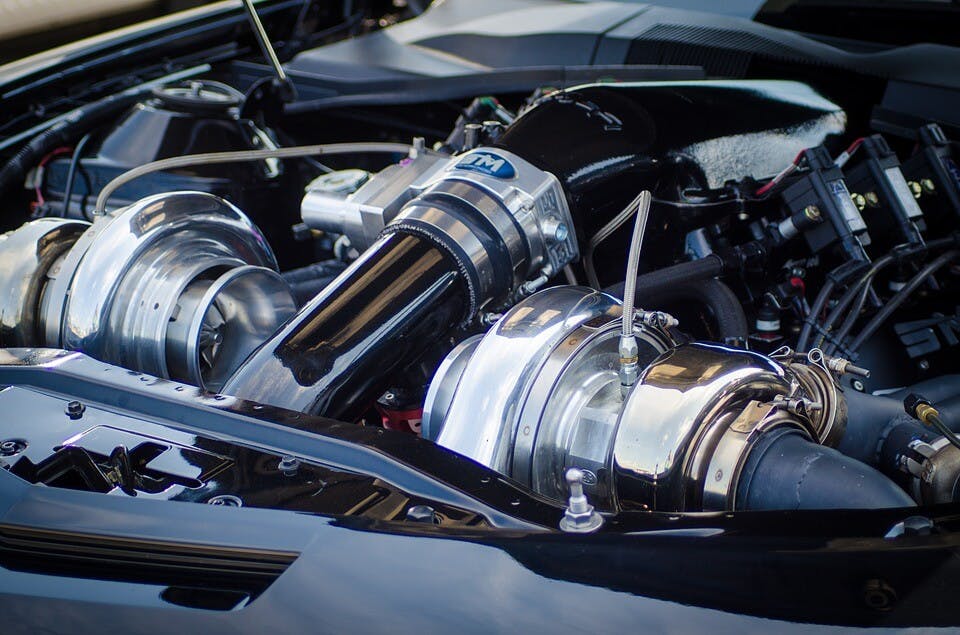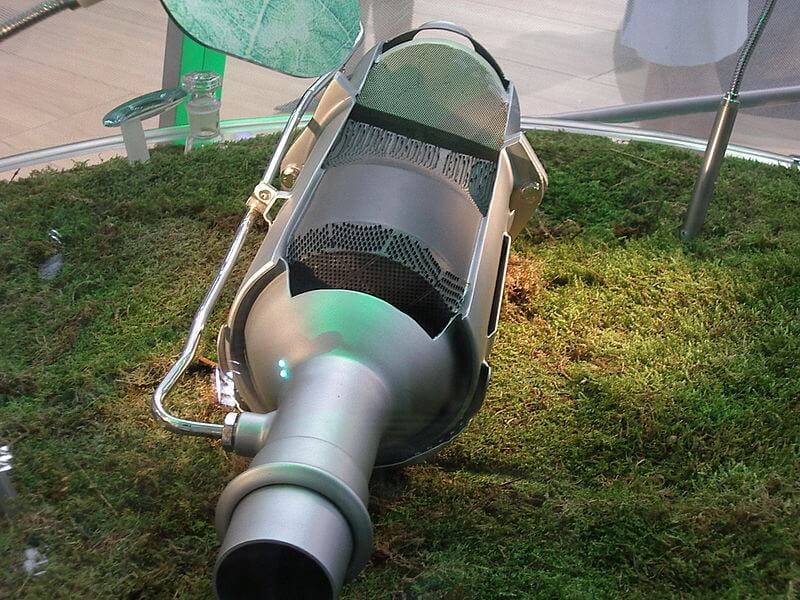EGR valve: What happens if it doesn't work properly?

The task of the EGR (Exhaust Gas Recirculation) valve is to return part of the exhaust gases back to the combustion chamber.
This article will shed light on the EGR valve, how it works, and what issues you can encounter when this component doesn't work properly.
Indholdsfortegnelse
EGR valve function
The EGR valve opens and closes the connection between the intake and exhaust pipes. When the valve is opened, a certain amount of exhaust gas enters the intake manifold and mixes with the newly arriving fuel mixture into the cylinder.

Exhaust system: What are its main components?
Mixing the exhaust gases with the fuel mixture will cause the proportion of oxygen in the combustion chamber to be lower. From the point of view of performance, this is undesirable, but it will cause a decrease in the combustion temperature, which leads to a lower formation of nitrogen oxides. High temperatures and excess air increase the production of nitrogen oxides in exhaust gases.
Simply put part of the exhaust gas goes through the combustion process twice. What has already burned once will not burn again, resulting in a smaller amount of oxygen for combustion. A smaller amount of oxygen makes it possible to burn less fuel and thus obtain a lower combustion temperature at which the formation of nitrogen oxides is lower.
The EGR valve is used by petrol engines as well as diesel engines. In gasoline engines, the recirculation of exhaust gases varies between 10-20% of the volume of the intake mixture into the cylinder. In diesel engines, the recirculation of exhaust gases varies between 15-25%.
The downside of using the EGR valve
A high proportion of recirculated exhaust gases reduces engine performance (less air, less fuel, lower combustion temperatures = less mechanical work). The intake pipe is gradually clogged with solid particles from the exhaust gases, significantly limiting the volume of air sucked into the cylinders.

Engine Power And Torque: Which of these parameters is more important?
The amount of recirculated exhaust gases is determined depending on the amount of air intake, engine speed, and the amount of fuel injected. However, exhaust gas recirculation is only active at engine temperatures above 50°C.
At revolutions higher than 3000 rpm, the EGR valve is inactive, and thus exhaust gas recirculation does not occur. However, with the advent of stricter Euro emission standards, dual-circuit EGR valve systems that work in all engine cycles began to be promoted.
Dual Loop exhaust gas recirculation system
Modern engines that need to meet strict emission standards use a dual-loop exhaust gas recirculation system composed of a high-pressure and low-pressure exhaust gas return system.
1. High-pressure exhaust gas recirculation system
With this system, the exhaust gases are taken directly from the exhaust manifold and are led to the intake manifold without cooling. The hot exhaust gases mix with the air flowing through the intake manifold and heat it up.

Diesel Particulate Filter: What is it, and how does it work?
The result of this system is faster heating of the catalytic converter and the diesel particulate filter, which are faster and more ready for operation. However, the high-pressure system is only active when the engine is cold.
2. Low-pressure exhaust gas return system
This system collects exhaust gases after the particulate filter, which means they are soot-free. The exhaust fumes are, therefore, cleaner; thus, the engine's wear and the intake pipe's clogging with carbon are significantly reduced.
In addition, the exhaust gases are cooled by an exhaust gas cooler before returning to the intake manifold. The low-pressure system operates when the high-pressure system is deactivated.
Clogged EGR valve
Exhaust gases recirculated using the single-circuit EGR valve system return to the intake manifold without passing through the diesel particulate filter or catalytic converter.
However, such uncleaned exhaust gases quickly clog the EGR valve and intake pipe with carbon. The same case occurs if the engine burns low-quality fuel or is damaged and burns the fuel mixture and engine oil.
The result of a clogged intake manifold and EGR valve is:
Engine jerking during acceleration
Excessive smoke from the exhaust
Clogging of the particulate filter occurs more quickly
The engine starts poorly
The engine produces more hydrocarbons with nitrogen oxide
Illuminated engine warning light
The engine chokes and has reduced power (due to a thick layer of carbon in the intake manifold, not enough air gets into the cylinders)
How to prevent this problem? EGR valve maintenance is mainly based on cleaning and removing carbon deposits.
How to solve the problem with a clogged EGR valve?
If your vehicle has already been affected by one of the problems mentioned above, you have the following two options to choose from:
Replacing the EGR valve
Cleaning the EGR valve
1. Replacing the EGR valve
When replacing an old, clogged, or malfunctioning EGR with a new one, expect higher repair costs. This option is not the cheapest, so if the EGR valve can be cleaned up, you should choose this option.
2. Cleaning the EGR valve

Cleaning the EGR valve consists of disassembling the entire component, which is placed in an ultrasonic cleaner. It cleans all dirt and deposits from it using a special liquid.
Such cleaning is very gentle on the component, as there is no mechanical stress on the materials during it, and therefore no damage to the EGR valve.
However, you can also clean the valve yourself at home. You only need a few special cleaners to break down and remove carbon deposits. Under no circumstances should you clean the valve with a wire brush, knife, or screwdriver, as you could mechanically damage the valve.